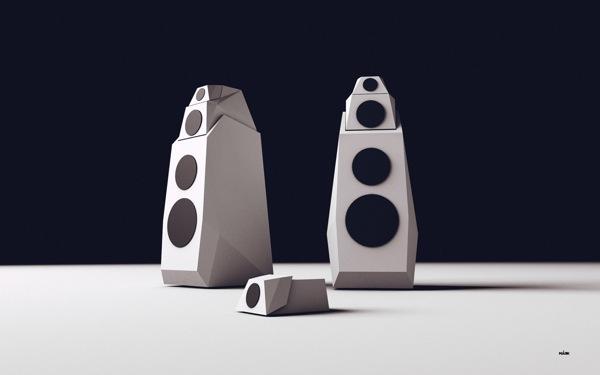Do it Yourself...Or Not?

One question in the posting’s comments section suggested that the roughly $5,000/pair cost that would go into building such speakers (not including time and labor) might be better put into buying a finished pair of $,5000 speakers.
Typically, the rough estimate used for setting the selling price of an audio product has been 5x the parts cost, though for super high-end products I suspect it’s higher given the smaller market anticipated for such goods. If you consider the price of the cabinet materials, that $5,000 in drivers and circuit parts will go even higher. How much will depend on the price of the materials and finish. MDF? Birch plywood? Aluminum? Exotic polymers? Vinyl? Exotic veneers? Gloss piano black or white?
But let's say that a manufacturer could save enough in bulk purchasing of the parts to help make up for the wood and other materials needed to build the cabinet. Since those savings will probably be small, however (we're not anticipating a production run of 10,000 finished speakers at these prices!), it’s likely that the cost of the materials for the cabinets will still add to that $5,000. And don’t forget the need for sturdy shipping containers. I was once told by a manufacturer that, for their budget speaker at least, the shipping box was the biggest single expense on the speaker’s balance sheet! A big, heavy speaker such as this might also demand a wood crate. So to be on the safe side we’ll increase the total parts cost to $6,000/pair.
At that level, the 5x multiplier will result in a $30,000/pair retail priceat least. Can this design compete with manufactured speakers selling for $30,000? Without an audition there’s no way to tell for certain, but given the quality of the parts and the woodwork, it’s very possible.
But there are excellent speakers selling for $5,000/pair or less. Can they compete with a $30,000 speaker? Not always, but in some cases they might come very close. The law of diminishing returns can't be broken. A 5% improvement in the final, audible result, once beyond a certain price (and we can disagree where that break point might be), can often more than double the cost. And the pricier the speaker, the more expensive-looking (and therefore more expensive) the cabinet has to be. The same applies to audio and video products in general. Put a great $5,000 amp in a plain, ugly black case, sturdy enough to support its weight but no more, and it probably won’t sell. Put it in a massive chassis made of half-inch thick, sculpted and brushed aluminum, which now becomes the most expensive component in the design, and the amp might well be priced to move at $10,000 or more.
DIY isn’t for everyone. You can spend months (or years!) building what you hope will be your dream speaker, only to find when you finally hear it that it isn’t. And most of us lack the time required and/or are unwilling to wait for the results.
Enthusiasts often go the DIY route to save money. Done right, they might well save big. But it’s a bit of a shot in the dark until you can hear the finished product. And for every DIY such as this one, using woodwork worthy of a master cabinetmaker and very high quality parts, you’ll find dozens of DIY designs with budget drivers encased in pristine cabinets. Considering the amount of work that goes into crafting those cabinets, is the use of cheaper parts justified? Sometimes, yes. The same law of diminishing returns applies to drivers as to finished speakers. Doubling the parts cost doesn’t come anywhere near doubling the quality.Some DIYers build from scratch. Others use one of the many designs (such as this one) available on a range of Internet sites, including kits. There are also ambitious 3-way center channel designs, though they’re not nearly as numerous as more conventional towers, bookshelves, and subwoofers.
To get an idea of the effort involved in doing this right, See the build thread here: This is a very different and more modest design than the one above, with well-regarded but not overly pricey drivers and other parts. I’d estimate their cost at around $600/pair for drivers and crossovers. The cabinetwork, even in this less upscale design, is clearly first-class, but not nearly as ambitious as in the Latvian DIY effort. There’s also a matching center channel on the website where this more modest design (the ZDT3.5) originated, zaphaudio.com.
DIY isn’t for everyone. You can spend months (or years!) building what you hope will be your dream speaker, only to find when you finally hear it that it isn’t. And most of us lack the time required and/or are unwilling to wait for the results. We want our new audio now, not at the end of a trail strewn with sawdust, toil, tears, and sweat. But for DIY enthusiasts, many of whom are so into it that they begin designing their next project even before they’re done with the current one, the creative journey is as important as the destination. And most of today’s most respected commercial speaker designers began by building their own and discovering they had a knack for it.





























































